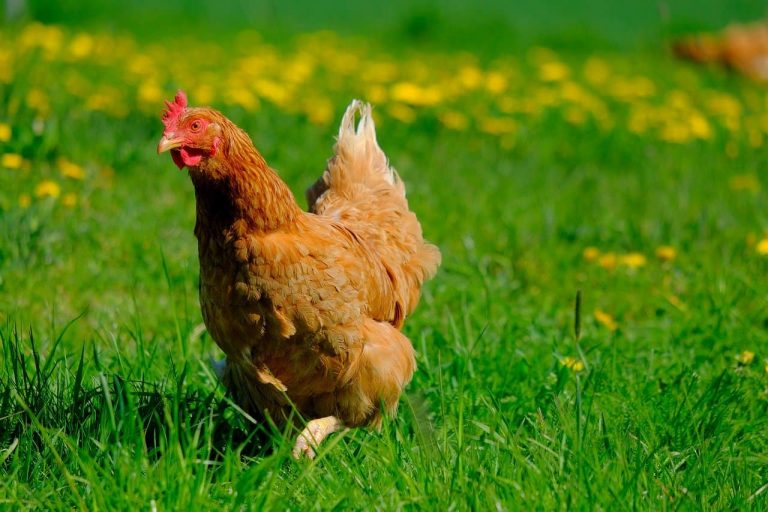Backyard chicken farming is an interesting hobby, not just a business venture. The good thing is that you can pursue it as a hobby, an interest, a passion, or even as a part-time investment. That said, these birds can be fascinating creatures to learn about.
For instance, many people wonder whether chickens can see in the dark. Some even think these wonderful creatures are afraid of the dark. More interestingly, learning about chickens’ interaction with light and dark could help them naturally return to the coop when darkness kicks in.
Contents
Chicken Do Not See in The Dark, Or Do They?
Chickens have relatively good vision during the day, but their ability to see in low light or darkness is limited. Like most birds, chickens have a type of vision called diurnal vision, which means they are adapted to see well in daylight.
Chickens have a higher density of photoreceptor cells called cones in their eyes, which are responsible for color vision and visual acuity in bright light. However, they have a lower density of another type of photoreceptor cells called rods, which are more sensitive to dim light and are responsible for night vision in many animals.
Due to this difference in photoreceptor distribution, chickens have reduced night vision compared to some other animals, such as nocturnal predators like owls or cats. In low light conditions, their ability to perceive objects and navigate their surroundings is diminished.
It’s worth noting that chickens have other adaptations to help them cope with low-light conditions. They have a wide field of view, which allows them to detect movement and potential threats from various directions. Additionally, they have a specialized gland called the Harderian gland that helps produce a substance called “gallamine,” which enhances their ability to see in dim light.
Overall, while chickens can navigate and move around to some extent in low light or at dusk, they rely more on their other senses, such as hearing and touch, in dark or nighttime conditions.
What Chickens Do in The Dark
Since chickens cannot see well in the dark, they engage in various activities that benefit their wellbeing. Here is how they will spend the night.
Roosting
Chickens have a natural instinct to roost, which means they prefer to perch or rest at elevated locations off the ground. At night, chickens will seek out a roosting spot within their coop or shelter. Roosting helps them feel secure, allowing them to avoid ground-level predators and providing a vantage point to observe their surroundings.
Sleeping
Chickens sleep during the night, just like humans and many other animals. When they roost, they tuck their heads under their feathers and sleep, often with one eye open for vigilance. Chickens require sufficient rest for their overall health and well-being.
Socializing
Chickens are social animals; at night, they may interact with their flock members while roosting. They may establish a pecking order or engage in gentle social behaviors like preening and huddling together for warmth and companionship.
Maintaining body temperature
Chickens are warm-blooded animals, and maintaining their body temperature is essential for their well-being. During the night, chickens fluff up their feathers to create an insulating layer of air, which helps them retain body heat in cooler conditions.
Repositioning
While roosting, chickens may adjust their positions on the roosting perch to find a comfortable spot or to maintain balance and stability. This repositioning can occur throughout the night as they settle comfortably.
It’s worth noting that chickens are diurnal animals, meaning they are most active during the day. Therefore, their nighttime activities primarily revolve around rest, sleep, and maintaining a sense of security within their coop or shelter.
Does Chicken Need Light at Night?
Chickens, like most animals, do not require light at night. In fact, providing continuous light during the night can disrupt their natural sleep patterns and may negatively affect their health and well-being.
In a natural setting, chickens are diurnal animals, meaning they are most active during the day and rest or sleep at night. They have evolved to follow a natural circadian rhythm, which includes periods of restful sleep during the dark hours.
However, there are instances in commercial chicken farming where artificial lighting is used to manipulate their natural behavior and encourage increased egg production. By extending the amount of light they receive, usually to around 16-18 hours of light per day, some farmers can stimulate the hens to lay more eggs. This practice is known as “light stimulation” and is typically used during the fall and winter months when daylight hours naturally decrease.
It’s essential to strike a balance and provide chickens with a proper light-dark cycle. If you keep chickens, make sure to provide them with enough natural light during the day and a dark, quiet environment at night to allow them to rest and maintain their well-being.
How To Train Your Chicken to Return to Coop at Night
Predators hunt when dusk falls. The instinct of animals is to survive, but domesticated birds like chicken may not have well-developed instincts like their wild counterparts. Therefore, being afraid of the dark amidst the inability to see well at night might be a survival instinct for chickens.
Since chickens are daily, as we mentioned earlier, they love light. So, providing a source of artificial light at night could attract the chicken to the coup.
Below are several tips on how to use light to train your chicken to return to the coup at night:
Install a light near the coop
Place a light source, such as a small lamp or a solar-powered light, near the entrance of the coop. Ensure that the light is bright enough to be visible from a distance.
Time the light
Set a timer or use a light sensor to automatically turn on the light in the evening, a little before dusk. The idea is to create a visual cue that signals the chickens that it’s time to return to the coop.
Coordinate feeding time
Make sure to feed the chickens inside the coop or near the coop entrance. This will encourage them to associate the presence of food with the light and the coop.
Train with positive reinforcement
As the light turns on, scatter some treats inside the coop or near the entrance. Chickens are naturally motivated by food, so they will be inclined to follow the treats and enter the coop.
Repeat the process
Consistency is key. Repeat the light and treat routine each evening until the chickens become familiar with the pattern. Over time, they will learn to associate the light with returning to the coop.
Gradually reduce treats
Once the chickens are consistently returning to the coop using the light cue, you can gradually reduce the number of treats provided. Eventually, the chickens will associate the light itself with the desired behavior.
It’s important to note that the success of training chickens to return to the coop using light depends on the individual chickens and their response to the training method. Some chickens may be more receptive than others, so patience and persistence are necessary. Additionally, always ensure that the coop is comfortable, safe, and inviting for the chickens to encourage them to return willingly.
Conclusion
Chickens can see very well during daytime, but they lose most of their visual ability when darkness kicks in. You can take advantage of this to train your flock to return to the coup at the right time for their security. This can help protect your chicken from predators and elements when you stay out late. You will also have an easier time handling the flock as you will not have to force them to enter the coup which makes them fussy.




